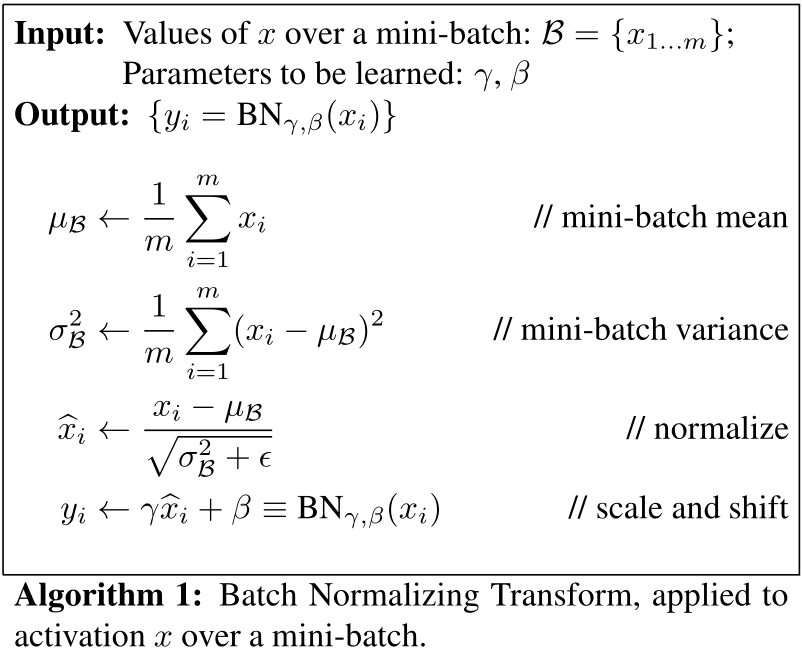RECENTLY READ
UPCOMING READING
Batch Normalization Accelerating Deep Network Training by Reducing Internal Covariate Shift
Jan 10, 2021 NN layers learning rate
Table of Contents
- Summary
- Differences to input Normalization
- Batch Normalization for CNN and other networks
- Accelerating a BN Network
Summary
Neural Network are generally hard to train. Changing the parameters of one layer changes the input distribution for the following layer. This change in distribution is called a covariant shift.
To reduce this needed adaptation of the layer to the covariant shift, the authors present “Batch Normalization” (BN). This method normalizes the data for each mini-batch, between the layers. This allows to use a higher learning rate, be less careful about the initialization and can act as regularizer.
Differences to input Normalization
Normalizing each input of a layer can change/reduce the capabilities what the layer can represent. “Batch Normalization” addresses this by making sure that the transformation inserted in the network can represent the identity transform.

BN transform is a differentiable transformation that introduces normalized activations into the network. This ensures that as the model is training, layers can continue learning on input distributions that exhibit less internal co- variate shift, thus accelerating the training. Furthermore, the learned affine transform applied to these normalized activations allows the BN transform to represent the iden- tity transformation and preserves the network capacity.
Batch Normalization for CNN and other networks
Generally BN can be applied to any set of activations in a network.
Accelerating a BN Network
Just adding BN is not a magical tool that will increase the performance of a network. The authors recommend additional changes to use the full advantage of BN:
- Increase learning rate
- Remove Dropout
- Reduce the L2 weight regularization
- Accelerate the learning rate dacay
- Remove Local Response Normalization
- Shuffle training examples more thoroghly
- reduce the photometric distortions
But adding BN just to a state-of-the art network, can yield a speedup in the training.
Metadata:
| Author: | Sergey Ioffe, Christian Szegedy |
| Released: | Feb 1, 2015 |
| Source: | Link |